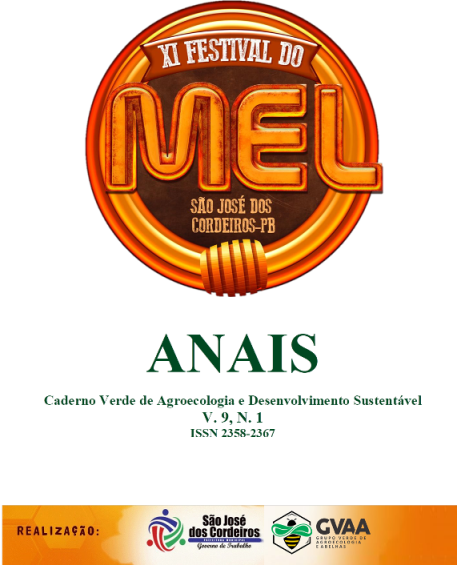PROPOLIS AND WAX PRODUCTION IN BEEKEEPING: COMPATIBILITY AND REQUIREMENTS
Keywords:
Apis mellifera, Artificial feeding, Diversification, Productive CompatibilityAbstract
In Brazil and specifically in the northeast region, beekeeping is almost exclusively for honey production, forgetting the beekeeper who, throughout the months of the year, outside the flowering, could diversify its activity in the production of propolis and beeswax. Both products benefit from systemic artificial feeding for productive development, while maintaining strong and growing swarms during the off season. Propolis has a complex and varied composition, is basically formed of resins and wax. The wax originates from the secretion of eight ceriginal glands in the workers' abdomen, and honey is their fuel for production. Propolis and wax are produced by bees in different degrees of development. Young bees in the 18th day of age produce wax to build combs, while female bees from the 22nd day of life will be able to collect resins for propolis production. In these two productive functions, the bees need a lot of energy, being essential the energetic feeding and stimulating complementary protein to maintain the hive population. The production of propolis and wax requires the beekeeper to invest in specific skills. The Apiary should be located near nectar and resin supplying vegetation, ventilated and shaded. At least three honeys or soberns with hive propolis collectors are recommended. Young queens with genetic disposition, sugar and individual feeders and pollen substitutes (powder or paste). The hives must be sequenced, those whose swarm contains frames with eggs, larvae and pulps, bees, hatchers, nursers, builders, vigilantes and peasants. Propolis should be harvested every 7 days using good production practices. Nectar should be provided weekly and uninterrupted. At the end of the production process, the pseudo honey will be harvested and stored for future feeds and the wax properly processed, respecting good practices.Downloads
Published
How to Cite
Issue
Section
License
Termo de cessão de direitos autorias
Esta é uma revista de acesso livre, em que, utiliza o termo de cessão seguindo a lei nº 9.610/1998, que altera, atualiza e consolida a legislação sobre direitos autorais no Brasil.
O(s) autor(es) doravante designado(s) CEDENTE, por meio desta, publica a OBRA no Caderno Verde de Agroecologia e Desenvolvimento Sustentável, representada pelo Grupo Verde de Agroecologia e Abelhas (GVAA), estabelecida na Rua Vicente Alves da Silva, 101, Bairro Petrópolis, Cidade de Pombal, Paraíba, Brasil. Caixa Postal 54 CEP 58840-000 doravante designada CESSIONÁRIA, nas condições descritas a seguir:
O CEDENTE declara que é (são) autor(es) e titular(es) da propriedade dos direitos autorais da OBRA submetida.
O CEDENTE declara que a OBRA não infringe direitos autorais e/ou outros direitos de propriedade de terceiros, que a divulgação de imagens (caso as mesmas existam) foi autorizada e que assume integral responsabilidade moral e/ou patrimonial, pelo seu conteúdo, perante terceiros.
O CEDENTE mantêm os direitos autorais e concedem à revista o direito de divulgação da OBRA, com o trabalho simultaneamente licenciado sob a Licença Creative Commons do tipo atribuição CC-BY.
O CEDENTE têm autorização para distribuição não-exclusiva da versão do trabalho publicada nesta revista.
O CEDENTE têm permissão e são estimulados a publicar e distribuir seu trabalho online (ex.: em repositórios institucionais ou na sua página pessoal) a qualquer ponto antes ou durante o processo editorial, já que isso pode gerar alterações produtivas, bem como aumentar o impacto e a citação do trabalho publicado.








